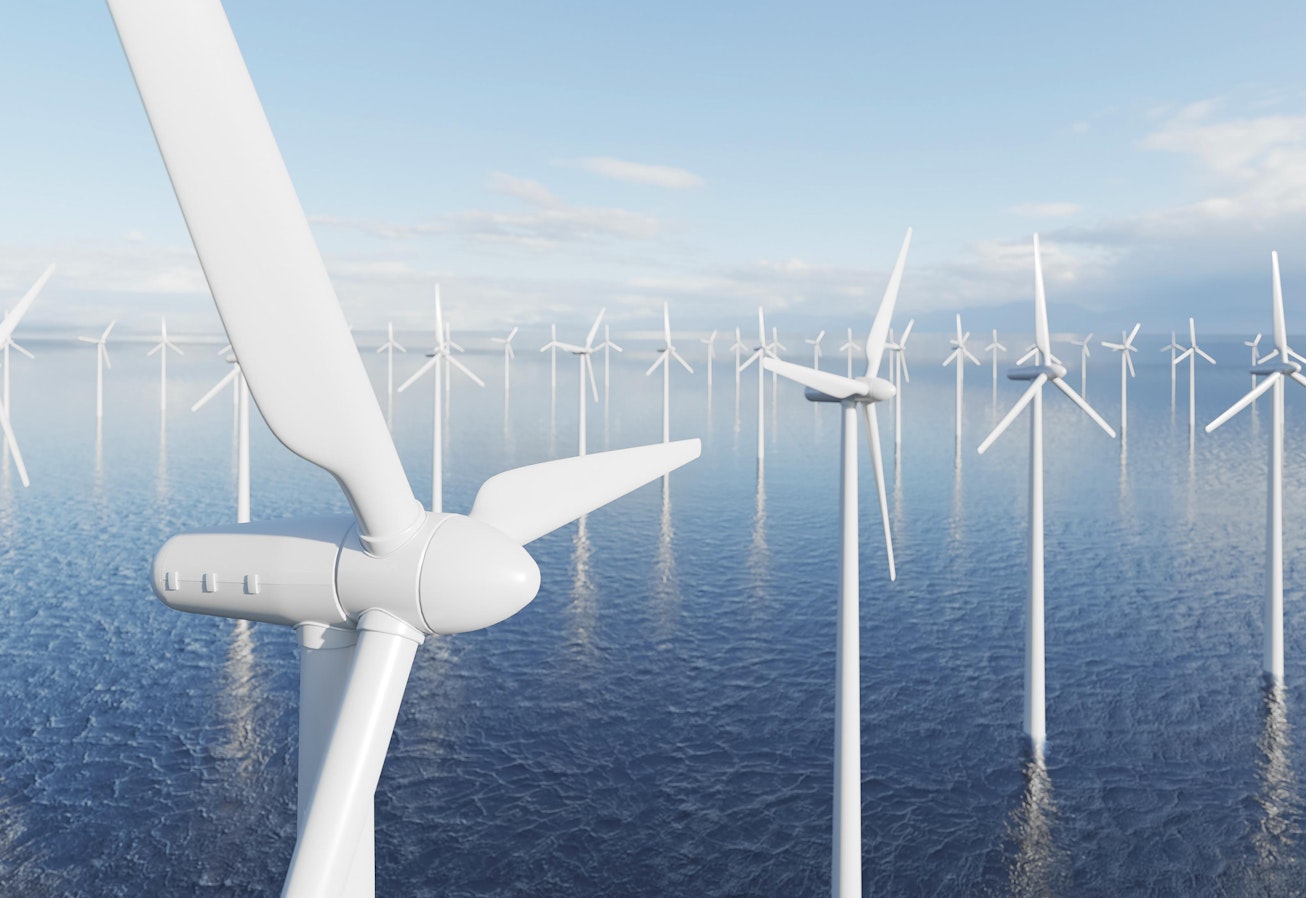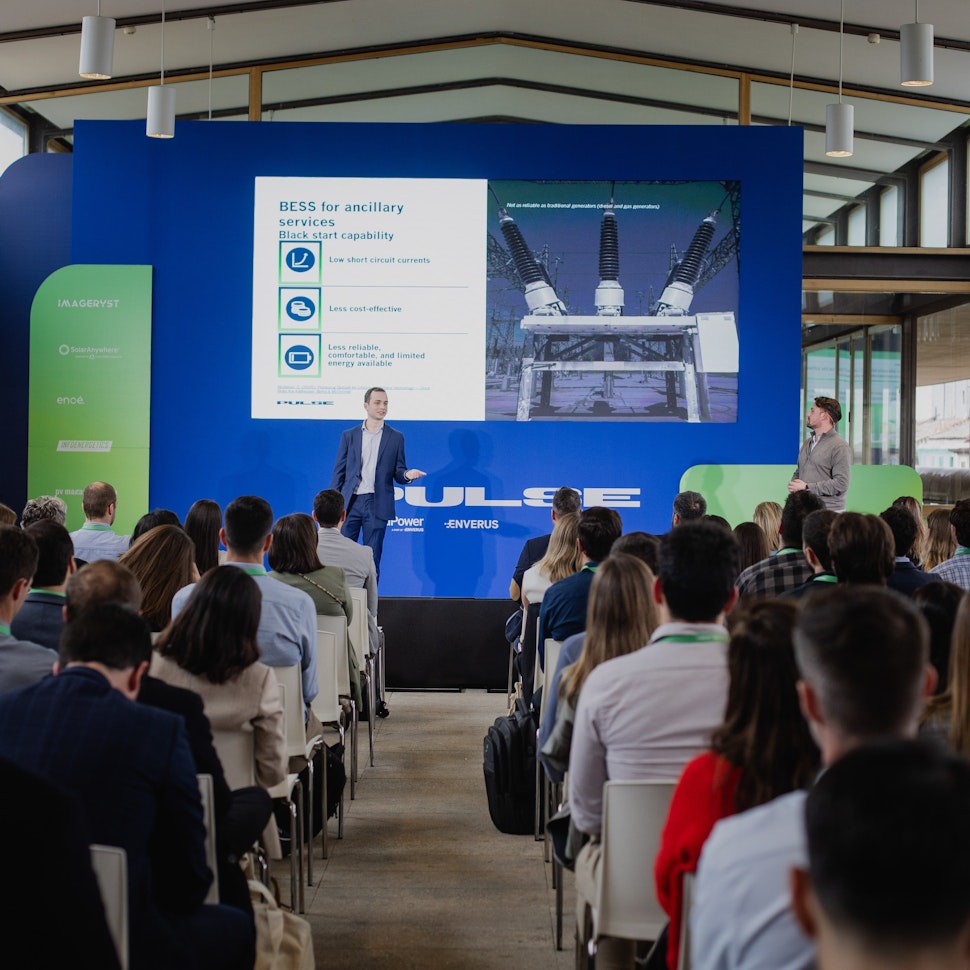- Solar energy blog
- What is the state of renewables in Germany 6 months since the elections?
What is the state of renewables in Germany 6 months since the elections?
Explore how a new conservative-led coalition and a €500 billion investment plan will impact Germany’s renewable energy sector and European climate policy.


Julian Scheer
Customer Success Manager
As a Principal Consultant at RatedPower, Julian Scheer is responsible for directly supporting clients throughout different markets. With his background in Heat and Power Engineering he is passionate about tackling climate related challenges both technically and from a behavioral perspective. For him transforming the Energy System of today is critical to ensure a more sustainable future!

Content
- A New Coalition, A Shifting Landscape
- The €500 Billion Fund: A Launchpad for Infrastructure and Energy Transition
- Legislative Progress: A Fast-Moving Six Months
- Remaining Tensions: Budget Pressure and Climate Ambiguity
- What It Means for Clean Energy Professionals
- Response to the energy transition "reality check" monitoring report
- Looking Ahead: Germany as an EU Market Shaper
Six months after Germany’s snap federal election, the new coalition government led by Chancellor Friedrich Merz has begun to reshape the country’s energy policy landscape. While the early days of the Merz administration were marked by uncertainty, recent legislative activity suggests a more nuanced approach to balancing conservative economic priorities with the country’s long-standing climate commitments.
This update revisits the outlook for Germany’s renewable energy sector, incorporating new laws, funding allocations, and market developments since the coalition took office in May 2025.

Download the 2025 Renewable Energy and Solar Research Report to unlock essential insights on the renewables industry. With expertise from our survey and data from solar simulations on RatedPower, the Report explores trends, challenges, and solar design preferences.
A New Coalition, A Shifting Landscape
Friedrich Merz’s conservative CDU/CSU alliance emerged from the February 2025 snap election with a clear lead but fell short of a governing majority with just 28.5% of the vote. To secure a stable government, the CDU/CSU entered into coalition with the Social Democratic Party (SPD).
While this three-party coalition raised hopes for continued progress on climate policy, many in the renewables sector remained cautious, particularly given Merz’s pro-industry, fiscally conservative stance. However, public support for clean energy and the legal weight of Germany’s climate targets ensured that renewables could not be entirely sidelined.
Six months on, the coalition has begun to deliver on key aspects of the energy transition, though not without compromise.
The €500 Billion Fund: A Launchpad for Infrastructure and Energy Transition
The new government’s €500 billion infrastructure fund remains central to its broader strategy. While the bulk of the funding supports military upgrades and public infrastructure, approximately €100 billion has been earmarked for climate-related initiatives.
Six months into the coalition’s term, that commitment is beginning to materialize through targeted legislation and energy sector reforms. The final direction of spending remains under review, but there's growing evidence that the fund is serving as a key driver for accelerating Germany’s energy transition, especially when projects are framed as supporting industrial competitiveness and grid modernization.
Legislative Progress: A Fast-Moving Six Months
Since May 2025, Germany has passed or advanced a series of laws aimed at accelerating renewables deployment, strengthening battery storage, and aligning national policy with EU energy directives, such as:
1. Renewables Expansion and Permitting Reform
In June 2025, the federal government approved a Renewables Acceleration Draft Law aimed at cutting red tape and aligning permitting with the EU’s Renewable Energy Directive (RED III). The legislation introduces:
Streamlined, fully electronic application processes for renewable projects (effective Nov 2025).
Centralized permitting authorities to reduce delays.
Simplified land-use and zoning requirements for solar and wind projects.
These reforms are already improving project timelines and reducing uncertainty for developers.
2. Solar and Wind Targets Sharpened
Germany has reinforced its commitment to ambitious capacity targets, enshrined in recent updates to the Renewable Energy Sources Act (EEG):
Onshore wind: 115 GW by 2030 (10 GW per year starting 2025)
Solar PV: 215 GW by 2030, requiring ~22 GW per year from 2026
Offshore wind: 30 GW by 2030, 40 GW by 2035, and 70 GW by 2045
While a previously planned goal of 100% renewable electricity by 2035, the government stated their aim to reach 80% by 2030 and maintains that neutrality will be reached soon after Germany’s coal exit, expected around 2038.

3. Battery Energy Storage Systems (BESS): A Breakthrough Year
Battery storage has received continued regulatory support since May 2025:
Grid Fee Exemptions Ongoing: Battery energy storage systems (BESS) in Germany remain exempt from grid usage fees until the end of 2028 under current legislation. While industry groups have called for further extensions, no official ruling has yet extended the exemption beyond this date.
Flexible Grid Connection Options Introduced: As part of the January 2025 Energy Reform Package, legal changes to the Renewable Energy Sources Act (EEG) and Energy Industry Act (EnWG) enabled cable pooling and overbuilding. These reforms allow renewable generators and co-located battery storage systems to share a single grid connection point, significantly easing integration into the grid.
New EEG Remuneration Models for Co-located Storage:
The reformed EEG introduced new optional models to support storage deployment alongside renewables:
Exclusivity Option (Ausschließlichkeitsoption): For systems charged solely with renewable electricity.
Differentiation Option (Abgrenzungsoption): Allows mixed-source charging while separately accounting for renewable and non-renewable inputs.
Lump-Sum Option (Pauschaloption): Offers simplified remuneration for smaller co-located solar and storage systems, reducing administrative complexity.
As of mid-to-late 2025, Germany hosts approximately 2 million stationary battery storage systems with a combined usable capacity of 22.1 GWh representing a 50% year-on-year increase. This positions Germany among the global leaders in distributed residential and small-scale energy storage.
Remaining Tensions: Budget Pressure and Climate Ambiguity
Despite progress, the coalition faces ongoing challenges in balancing fiscal conservatism with its climate ambitions:
Climate and energy programs still compete with defense and legacy infrastructure priorities within the €500 billion fund.
Some observers remain concerned that the government’s softened 2035 renewables target could signal wavering long-term commitment.
Public concern about the energy transition’s financial impact remains high, with nearly 80% of Germans expecting higher household costs.
Nonetheless, recent legislative momentum suggests that renewables are increasingly framed not as a climate imperative alone, but as core to economic modernization, grid resilience, and energy independence.
What It Means for Clean Energy Professionals
For renewable developers, utilities, and cleantech providers, the message is clear: Germany remains a critical market, but one where success increasingly depends on:
Policy fluency: Aligning project design with newly adopted EEG, grid, and permitting rules.
Partnerships: Collaborating with infrastructure providers and public agencies as co-investors or delivery partners.
Resilience framing: Positioning clean energy projects as contributors to national stability, industrial productivity, and long-term energy security.
Projects that integrate multiple goals, renewables, storage, grid support, industrial decarbonization, are best positioned to attract sustained public and private capital.
Response to the energy transition "reality check" monitoring report
A recent report from the Federal Ministry for Economic Affairs and Climate Action, “Energiewende effizient machen”, highlights a critical bottleneck: the pace of renewable energy expansion is outstripping the capacity of the electricity grid. This mismatch has led to rising costs and inefficiencies, prompting the government to rethink its rollout strategy.
In response, the coalition has introduced a set of 10 key measures aimed at better aligning renewable deployment with grid expansion. These include prioritizing grid-friendly locations for new wind and solar projects, streamlining permitting processes, and enhancing coordination between federal and regional planning authorities.
The overarching goal is to ensure that Germany’s path to climate neutrality remains both economically viable and technically feasible. While the coalition remains committed to its ambitious targets, this pivot reflects a more pragmatic approach, one that acknowledges the infrastructural realities of the energy transition. This has led some environmental organizations to be concerned that the shift in focus could result in an increased dependency on fossil fuels. Time will tell if and to what extent this will impact renewable energy output across the nation.
Looking Ahead: Germany as an EU Market Shaper
Germany’s domestic decisions continue to ripple across Europe. Its energy reforms are influencing how the EU allocates funds under the Clean Industrial Deal and how member states approach grid resilience, green hydrogen, and decarbonizing heavy industry.
With the eurozone facing pressure from global energy instability, Germany’s combined infrastructure and climate investments are viewed as stabilizing anchors. Clean energy providers able to meet both EU and national priorities will be at the forefront of the continent’s transformation.
Six months after the coalition took power, the picture is clearer: Germany’s conservative-led government is not abandoning the energy transition, but it is reframing it.
Instead of climate-first, the approach is infrastructure-first, industry-first, and resilience-first, with climate benefits seen as strategic byproducts.
For clean energy players, that means staying nimble, aligning with economic goals, and leveraging every tool, from EU regulation to national permitting reform, to stay ahead in a fast-evolving market.
Super Early Bird for PULSE 2026 ends soon!
Join hundreds of global renewable energy professionals, gain industry insights, and make valuable connections. Don't miss out!!

Latest stories
Related posts
Market analysis
The rise of utility-scale PV + storage plants in Italy
Discover how Italy’s latest policies and auctions are driving utility-scale solar and battery storage projects to meet ambitious 2030 targets.
Updated 4 DEC, 25

Market analysis
From sun to socket: What Iberia’s grid needs to handle 2030 renewable targets
Discover how Spain and Portugal are upgrading their grids to meet ambitious renewable targets and prevent future blackouts.
Updated 25 NOV, 25

Market analysis
France’s land challenge in the solar energy boom
Explore why France’s solar expansion faces land-use limitations, local resistance, and complex permitting, despite having space to grow.
Updated 18 NOV, 25

- RatedPower
- Solar energy blog
- What is the state of renewables in Germany 6 months since the elections?
 Watch a demo
Watch a demo Ask our AI Product Expert
Ask our AI Product Expert

